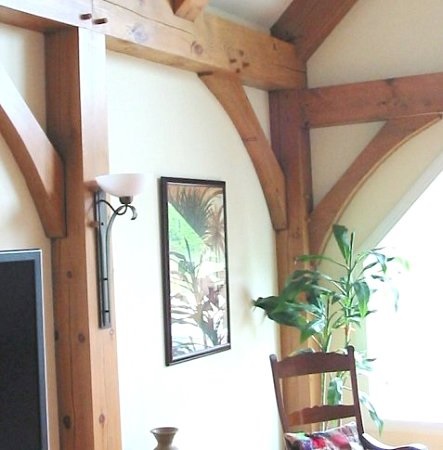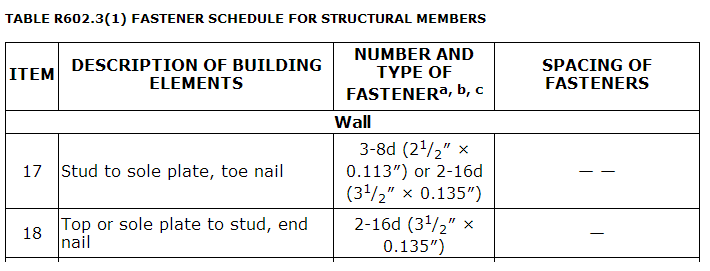A friend used trim head screws for ALL of the 2x4 framing (including the outer walls) of his 2400 sq. ft. house. The house uses 8x8s to carry the load; none of the 2x4 framing is load bearing. The inspector did not see a problem with it (but maybe she didn't even see the screws).
Edit- the picture below shows a similar (post and beam) style of building. The original building was a wood/furniture shop (not commercial); it was erected about 20 years ago (±5 years). The old exterior walls were removed (I don't know anything about them); the new walls are 2x4 construction with trim head screws, including the exterior walls. The friend is a maintenance guy... not an engineer.
Is it built to code? Would it be correct to assume that (at least) the outer walls are in danger of windy conditions and earthquakes?


